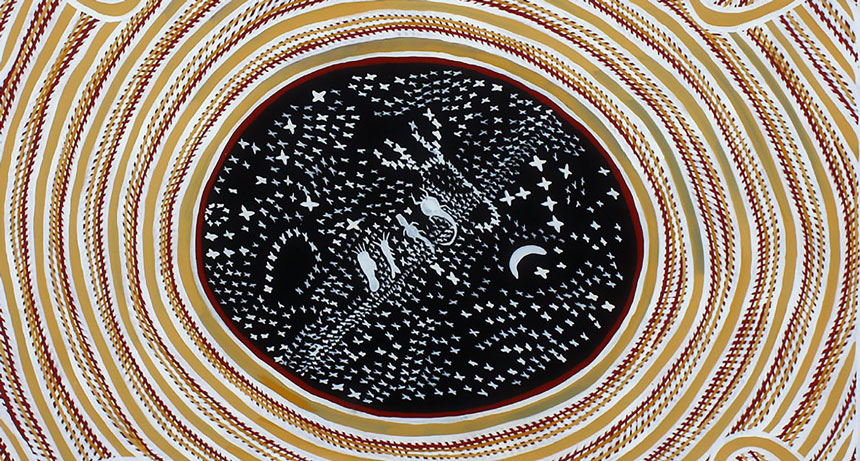86 stars get official names
Choices reflect international community

WRITTEN IN THE STARS This painting by an aboriginal artist from Australia depicts the Milky Way, moon and ancient spirits. Newly official star names are inspired, in part, by historical astronomical writings and artifacts from indigenous cultures around the world.
Bill Yidumduma Harney
- More than 2 years ago
In December, astronomers and space enthusiasts received an early present: 86 newly official star names.
Such designations are often derived from Arabic, Greek or Latin origins. But the new monikers also draw inspiration from ancient mythologies and historical star names from indigenous cultures around the world, including in China, Australia and southern Africa. The star names were officially recognized by the International Astronomical Union, which oversees the naming of objects in space, and announced on December 11. Here are some of the names we thought shined the brightest.
Xamidimura
Constellation: Scorpius
According to South African lore, the indigenous Khoikhoi people nicknamed the pair of stars just before the end of the scorpion’s tail “xami di mura,” meaning “eyes of the lion.”
Fafnir
Constellation: Draco
Fafnir is a dwarf from Norse mythology who became a dragon to guard his treasure. He was slain by the hero Sigurd.
Pipirima
Constellation: Scorpius
Pipirima is named for a pair of fraternal twins, the boy Pipiri and his sister Rehua, from a Tahitian legend. When their parents didn’t share a meal of fish one night, the two kids ran away. As the parents came closer to finding them, the twins climbed onto the back of a passing stag beetle and were carried into the sky.
Chalawan
Constellation: Ursa Major
Chalawan, a villainous crocodile king from a Thai folktale, lived in an underwater cave. A man named Krai Thong fell in love with one of Chalawan’s two wives and killed the crocodile king.
Ran
Constellation: Eridanus
Ran, a Norse goddess of the sea, created peril by capturing sailors in her net.
Unurgunite
Constellation: Canis Major
In stories from Australia’s aboriginal people, Unurgunite has two wives, which are represented by stars on either side of the named star. When Mityan, who represents the moon in the stories, fell in love with one of the wives, Unurgunite fought Mityan and won. Mityan has been wandering the universe ever since.
Alsephina
Constellation: Vela
Alsephina is the brightest star in this new list. “Al-safinah” in Arabic means “the ship,” referring to the ancient Greek constellation Argo Navis (named for the Argonauts’ ship and now split into three modern constellations). The bright star, located in one of those constellations called Vela, has been unofficially called Alsephina since at least 1660, when the Dutch-German mapmaker Andreas Cellarius illustrated the star in Harmonia Macrocosmica, a book about the cosmos.
Tianguan
Constellation: Taurus
Tianguan is a binary star that was unofficially named roughly 2,000 years ago during China’s Han period in the Tianguan shu, the first Chinese systematic description of the stars. In 1898, Édouard Chavannes translated the text to French, introducing Chinese constellations in their proper astrological positions to the western world.
Cervantes
Constellation: Ara
Cervantes is named after Miguel de Cervantes, a Spanish writer who wrote the famous novel Don Quixote. The star is orbited by an exoplanet named Quijote, referring to the story’s protagonist.
Titawin
Constellation: Andromeda
Titawin is named after Medina of Tétouan, a UNESCO World Heritage Site in northern Morocco that was a central point of contact between Spaniards and Arabs beginning in the 8th century.







